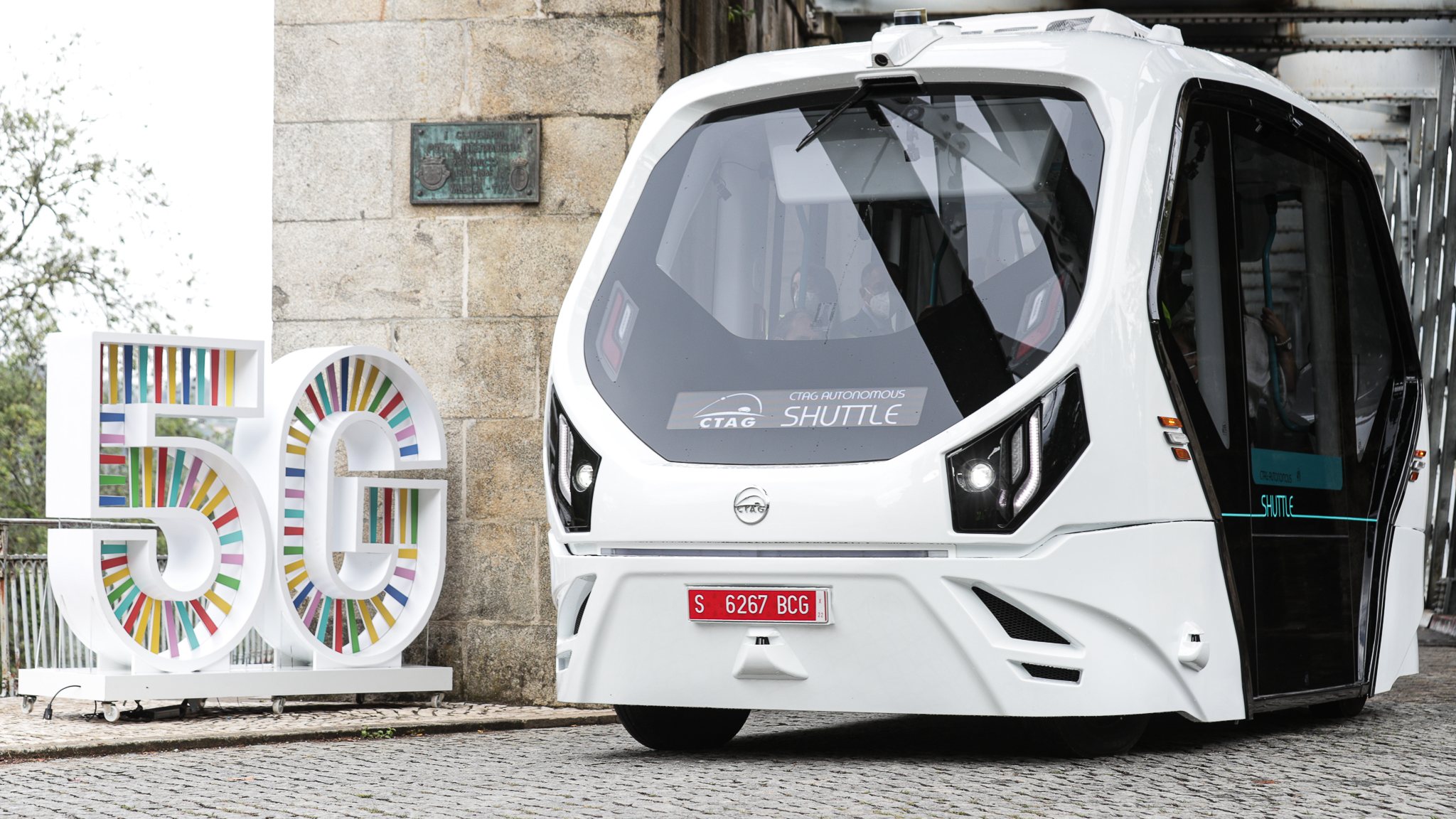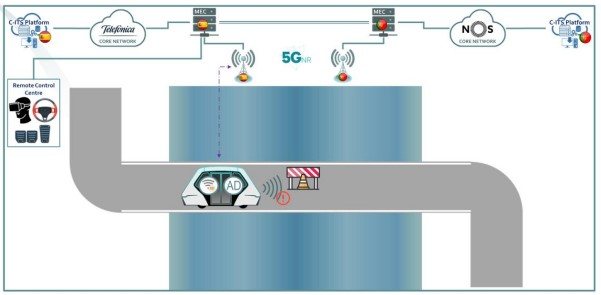The 5G-Mobix program, funded by the European Union from 2018 to 2022, aimed at promoting autonomous driving, is coming to an end. 58 partner companies participated in it, including the Portuguese NOS and its 5G network, in addition to 13 countries from the Old Continent, allied with Turkey, China and South Korea. The project was divided into 7 different areas, each related to the seven main technological challenges faced by autonomous vehicles, with Portugal having to solve the problem of handover between networks of different countries, when a vehicle crosses a border, and its safety and operability. It is no longer guaranteed by one 5G operator, passing this responsibility to another.
The car as we know it has been slowly evolving for a long time, but it is poised to take a leap forward in the next 2-5 years that will impress (in some cases scare) many drivers. In a first phase, the novelty will be the adoption of systems that help drivers, preventing them from exceeding speed limits, and then autonomous driving will be available for those who want it, promoted by the taxi business and TVDE, in addition to long -Long-distance road transport. This new technology will also attract car drivers who are willing to pay between 10,000 and 15,000 euros to obtain greater comfort on a Lisbon-Porto trip, entrusting driving to the computer, with the aim also of serving shuttles for transport of passengers, such as the one used by 5G-Mobix to demonstrate the potential of its system in driverless vehicles.
Autonomous car in difficult area but with older brother
The demonstration in Portugal took place to the north, on the old road-rail bridge that joins the Portuguese Valença with the Spanish Tui, separated by the Miño River that borders that region. To the narrow bridge, the organization added other elements of greater difficulty, from a hidden pedestrian, placed in the dead angle of the ferry, to an interruption of the road caused by a stopped cyclist. The interruption was one of the most important points of this phase . of the demonstration, since it would test the connection with the Control Center, a kind of older brother designed to help overcome situations that the autonomous system cannot overcome. It’s good to remember that level 5 autonomous vehicles like this one are driverless and many of them won’t even have a steering wheel or pedals. Hence, faced with an insurmountable difficulty, the solution recommended by the 5G-Mobix system is to use a human being, sitting somewhere in a Control Center, who takes charge of driving the vehicle in real time and overcomes the obstacle. .
We asked the global coordinator of 5G-Mobix, Coen Bresser, for the reasons that lead companies like Waymo (from Google) or Tesla to design self-sufficient autonomous systems, without the need for remote human help, because they resort to complex solutions with artificial intelligence , unlike what happens in 5G-Mobix. The answer was immediate: “our autonomous system allows interaction with other vehicles and with the road network, having access to information that an autonomous solution only with LiDAR, radars and cameras does not have.” And Bresser went further by stating that “our autonomous driving system can even serve to complement other systems on the market”.
“The system sees a pedestrian running before turning the corner”
If the bridge was not a problem, the autonomous vehicle discovered and dodged the pedestrian out of sight. Jorge Graça, head of Technology and Information at NOS, explained to us that, “at this stage, the system identifies pedestrians only if they have a 5G mobile phone, but in the demonstration on the Valença-Tui bridge, a sensor was installed that it would detect any pedestrian or cyclist approaching the road at that location, quickly warning the system of the dangerous situation.”
This is an example of “vehicle-to-network” information exchange, where the 5G-Mobix exchanges information with road-mounted sensors and cameras, otherwise the shuttle would have no chance of knowing that a pedestrian was approaching. the road, momentarily covered. by the bridge structure. The vehicle tested between Valença and Tui proved to cope well with the situation by not being surprised by people located in blind spots, obviously counting on the road in question having the necessary sensors and cameras to provide the precious information.
Jorge Graça admits that the fact that the system only detects individuals with 5G mobiles is a limitation, but adds that “it is also an opportunity, since the other systems that are still under development cannot know that a pedestrian is running around the corner. , or a cyclist will appear behind the truck, which is possible to know with our 5G-Mobix”.
A hole of 0.2 seconds instead of the current 2.5 minutes
The main part of the demonstration in the Valença-Tui cross-border area was to see to what extent the handover of the Spanish network to the Portuguese NOS, both 5G, could be accelerated. According to Coen Bresser, “traditionally on European roads a normal transfer can take up to 2.5 minutes, which is unacceptable for an autonomous driving system, which cannot be “blind” for so long. With 5G we were able to reduce the hole to just 0.2 seconds.”

See in the gallery the different situations to which the autonomous shuttle was subjected in Valença, as well as other vehicles
To get an idea of the reduction in the time required for the transfer that is achieved with the adoption of the 5G network, it is enough to take into account that, in 2.5 minutes, a vehicle traveling at 120 km/h travels almost 5 km, while in 0.2 seconds it does not exceed 7 meters. Bresser says this is an acceptable figure for the millions of vehicles that cross Europe’s borders on a daily basis.
The 5G-Mobix project will reach an approximate cost of 26 million euros, when it reaches completion, the European Union has contributed approximately 20 million. The rest was supported by the partners involved in the project. It now remains to wait for a definition of times, at a stage in which all the test work seems to have concluded, in the seven areas in which 5G-Mobix was divided.
Source: Observadora




